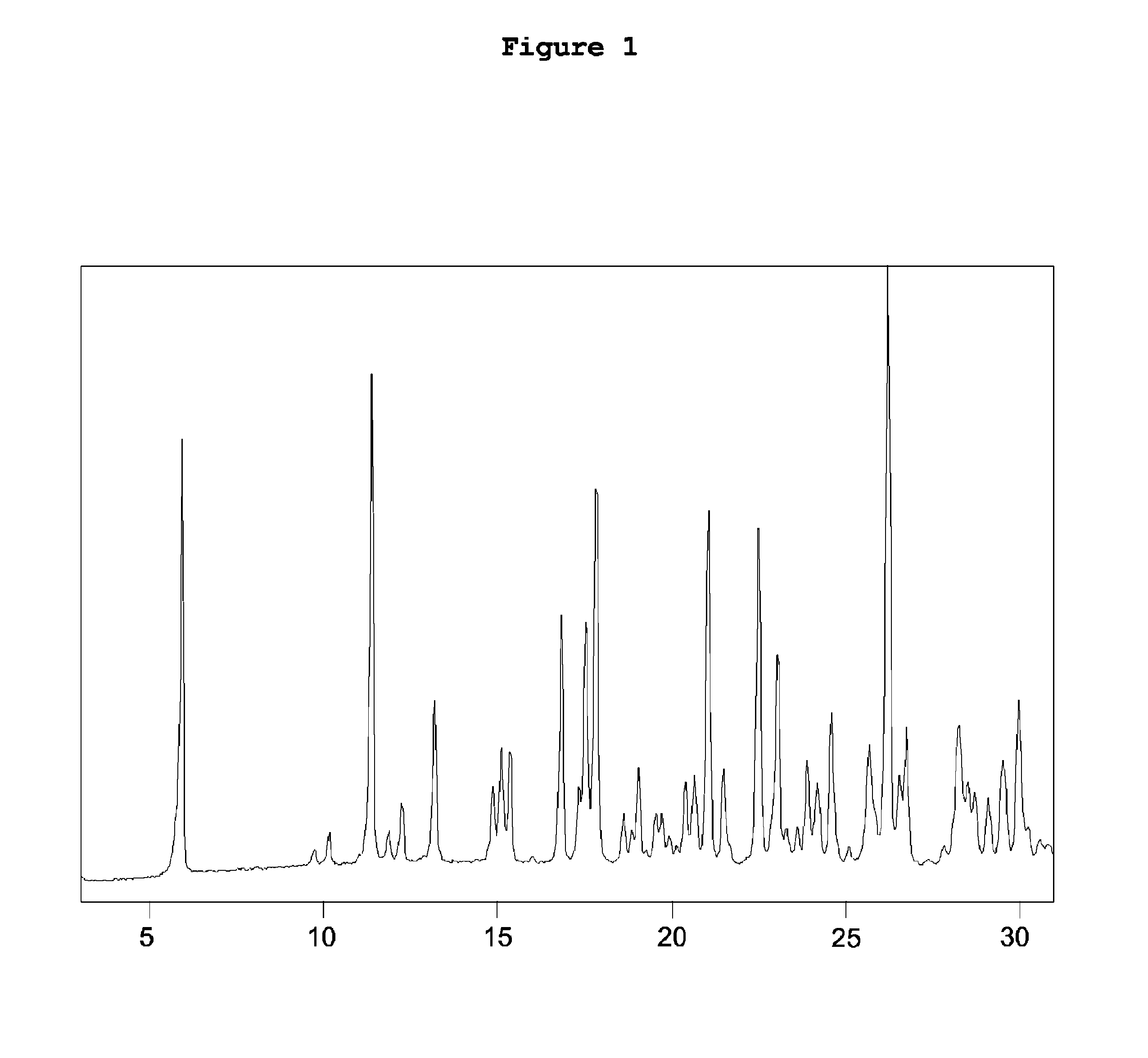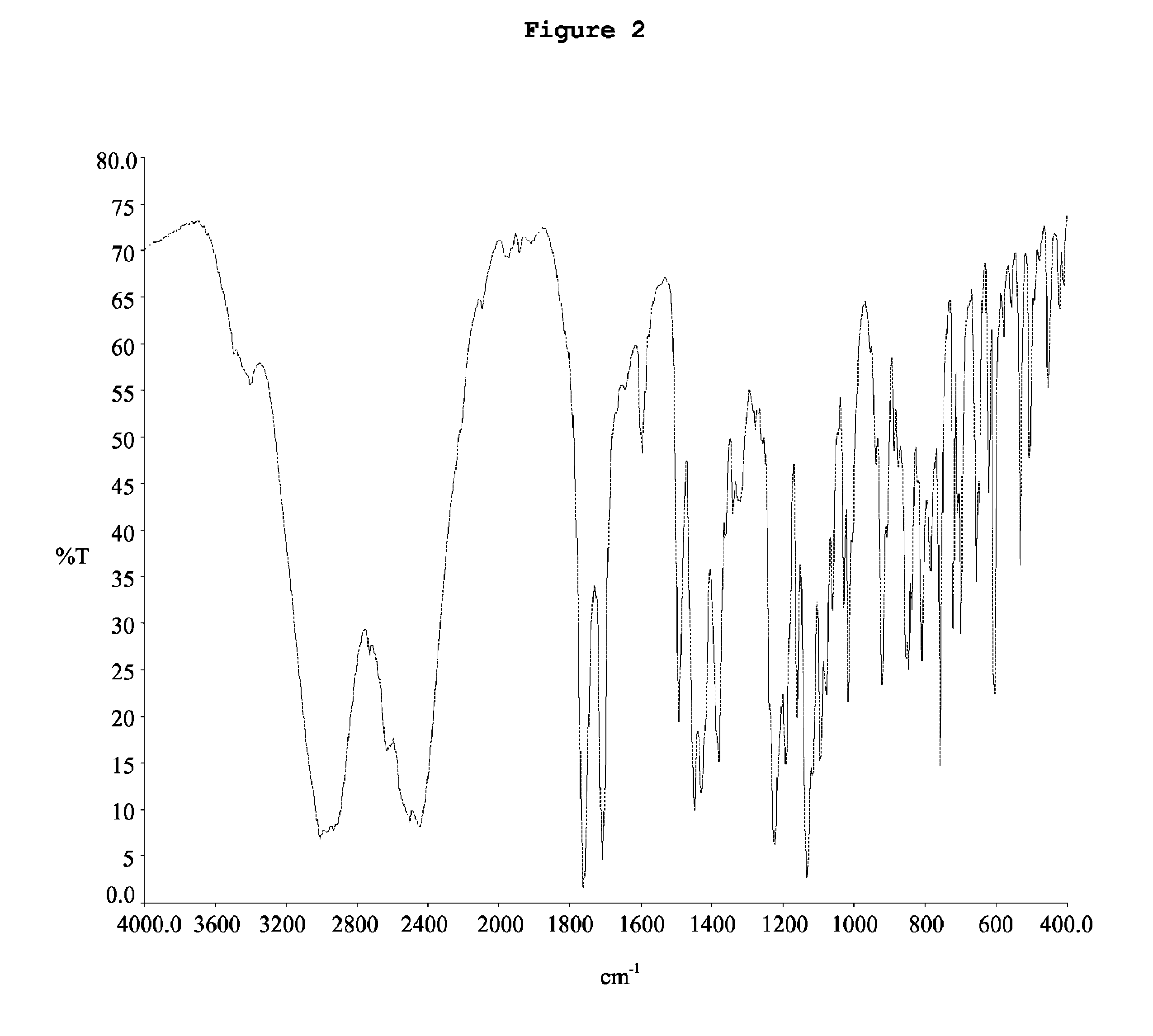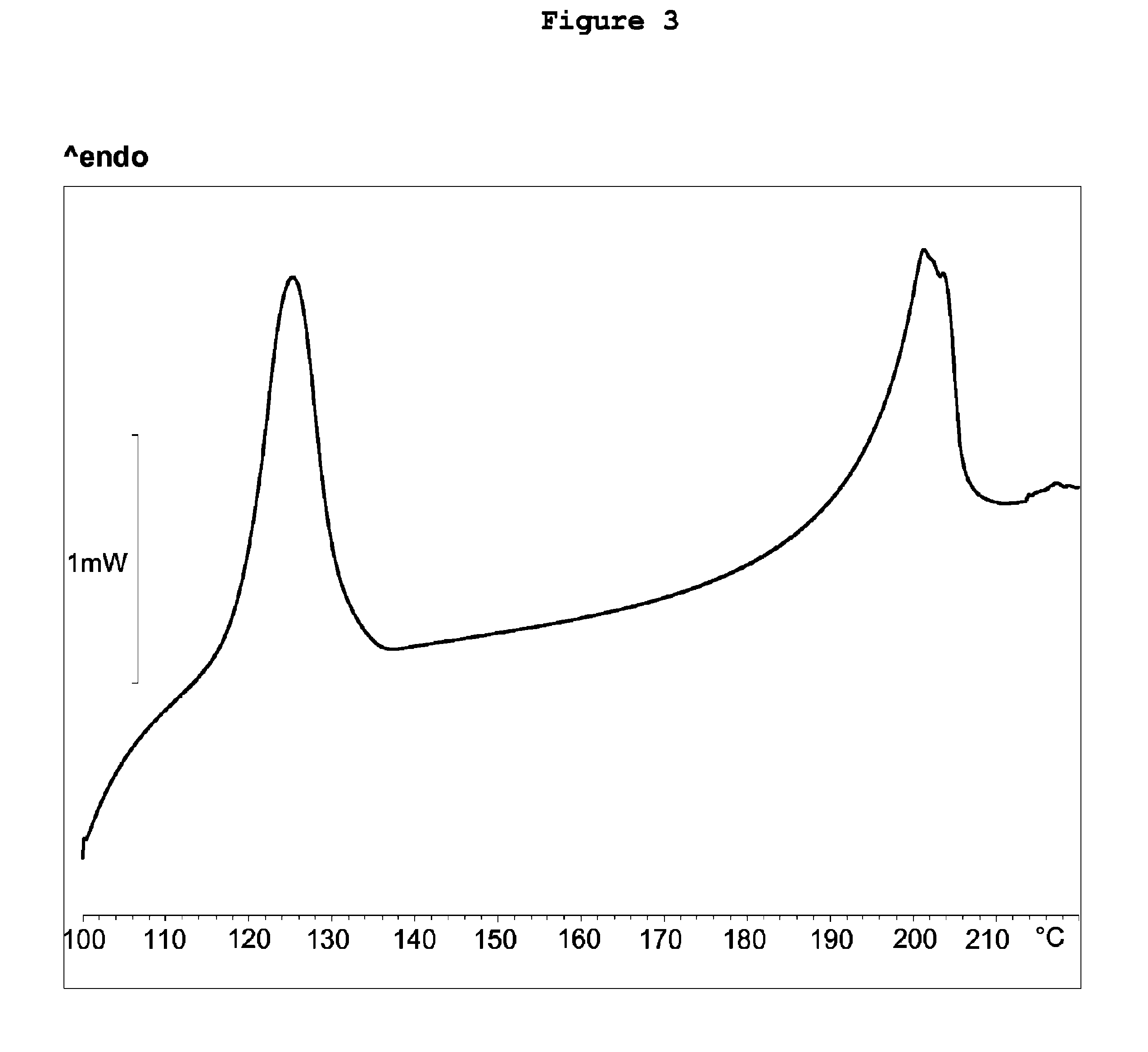Process for the preparation of levocetirizine and intermediates thereof
a technology of levocetirizine and intermediates, applied in the field of new products, can solve problems such as deprotection of intermediates obtained
- Summary
- Abstract
- Description
- Claims
- Application Information
AI Technical Summary
Benefits of technology
Problems solved by technology
Method used
Image
Examples
example 1
(−)-1-[(4-chlorophenyl)phenylmethyl]-4-piperazine
[0101]Charge 300 mL of N-ethyldiisopropylamine, 30 g of -(−)-4-chlorobenzhydryamine (Clemo, J. Chem. Soc. (1939) 1958-1969; Ingold, J. Chem. Soc. (1933) 1493-1505) and 42 g of bis(2-chloroethyl)amine hydrochloride in a reaction vessel, stir and heat to reflux for 3 hours. Cool to 60° C., add 24 mL of diethylamine, then heat the mixture again reflux temperature for another 5 hours. After reaction is completed evaporate the solvent in vacuum, add a mixture of water and ethyl acetate (1:1), adjust aqueous phase pH value to 10-11 with 30% sodium hydroxide solution. Separate organic phase and extract aqueous phase with ethyl acetate. Wash combined organic phase with purified water, decolorize organic phase with activated carbon, and evaporate the filtrate in vacuum. Separate impurities by of silica gel chromatography by eluting with ethyl acetate / ethanol (7:1) and / or then with ethyl acetate / ethanol / ammonia (7:1:0.25). Collect the eluate an...
example 2
a) [2-[4-[(4-chlorophenyl)phenylmethyl]-1-piperazinil]ethoxy]-acetonitrile dihydrochloride
[0102]Charge 2400 mL of acetonitrile to the reaction vessel, add 400 g of (−)-1-[(4-chlorophenyl)phenylmethyl]-4-piperazine, 300 g Na2CO3, 20 g KI and 300 g of 2-(2-chloroethoxy)acetonitrile in turn under stirring.
[0103]Stir and gradually raise the temperature to 110-115° C. Keep the temperature for 20 hours, after the reaction is completed, cool the mixture to 80-90° C. and add 25 g of activated carbon and stir for 20 minutes. Filter off carbon and wash cake with appropriate amount of acetonitrile. Into combined filtrate introduce dry HCl gas until pH value reaches 0.5-1. Continue to stir the slurry for 20 minutes and filter. Wash the cake with appropriate amount of ethanol and dry at 50-55° C. for 10 hours to obtain 520 g of the title product.
[0104]The yield 95%, HPLC (area) 95%. The obtained [2-[4-[(4-chlorophenyl)phenylmethyl]-1-piperazinyl]ethoxy]-acetonitrile dihydrochloride has in the X-...
example 3
[0106]3000 mL of methanol and 300 g of [2-[4-[(4-chlorophenyl)phenylmethyl]-1-piperazinyl]ethoxy]-acetonitrile dihydrochloride were added into a reaction vessel and thereto a KOH solution prepared with 600 g of KOH and 600 mL of purified water was added under stirring and keeping the reaction temperature below 40° C. The temperature was gradually raised to 70-76° C. and kept for 24 hours. After the reaction was completed, the reaction mixture was cooled to 40-45° C. and methanol was distilled off at a reduced pressure. Then 1000 mL of purified water and 3000 mL of CH2Cl2 were added and the temperature was decreased to 20-30° C. pH value was adjusted to 4.2-4.8 with 37% HCl. The organic layer was separated and the water layer was extracted twice more with 2000 mL of CH2Cl2.
[0107]The organic phases were combined, dried with 200 g of anhydrous sodium sulfate for one hour and filtered. The organic phase was concentrated until an oily residue was obtained, which was dissolv...
PUM
| Property | Measurement | Unit |
|---|---|---|
| boiling point | aaaaa | aaaaa |
| temperature | aaaaa | aaaaa |
| time | aaaaa | aaaaa |
Abstract
Description
Claims
Application Information
 Login to View More
Login to View More - R&D
- Intellectual Property
- Life Sciences
- Materials
- Tech Scout
- Unparalleled Data Quality
- Higher Quality Content
- 60% Fewer Hallucinations
Browse by: Latest US Patents, China's latest patents, Technical Efficacy Thesaurus, Application Domain, Technology Topic, Popular Technical Reports.
© 2025 PatSnap. All rights reserved.Legal|Privacy policy|Modern Slavery Act Transparency Statement|Sitemap|About US| Contact US: help@patsnap.com



